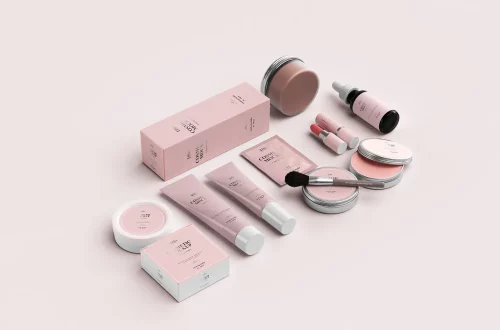
Exploring the Excitement of Sex Paddles in Intimate Play
Exploring the world of intimate play can be a thrilling journey filled with discovery, connection, and excitement. Among the various tools and accessories that can enhance this experience, sex paddles stand out as a fascinating option. These versatile implements are not merely instruments of pleasure; they embody a rich tapestry of history and culture while appealing to a diverse range of preferences and fantasies.
As couples explore their boundaries and delve into new dimensions of their sexual experiences, incorporating elements like paddles can introduce an exhilarating balance of sensation and communication. The act of using a paddle is not solely about physical impact; it can also be a powerful expression of trust, vulnerability, and mutual consent. With the right mindset and preparation, paddles can transform intimate moments into unforgettable memories, fostering deeper connections between partners.
In recent years, the conversation surrounding sexual wellness has expanded, opening up pathways for individuals to express their desires more freely. This shift has led to a growing interest in various forms of intimate play, including the use of paddles, which can enhance both pleasure and exploration. Let us delve deeper into the world of sex paddles, examining their appeal, safety considerations, and tips for a fulfilling experience.
The Allure of Sensory Play
Sensory play is a core aspect of many intimate experiences, and sex paddles can play a significant role in this realm. The allure of sensory play lies in its ability to engage multiple senses, creating an immersive experience that can heighten arousal and intimacy. When using a paddle, the sensations range from soft to intense, allowing partners to explore their preferences and boundaries together.
The sound of a paddle striking the skin can evoke a powerful psychological response. For many, the sharp crack can be exhilarating, heightening anticipation and excitement. This auditory element adds another layer of stimulation, amplifying the overall experience. Additionally, the visual aspect of using a paddle—its shape, color, and texture—can also enhance the mood and set the scene for intimate play.
Moreover, the tactile sensations provided by a paddle can vary significantly based on its material and design. Leather, silicone, and wood paddles all offer different feels, catering to an array of preferences. Some may prefer the sting of a firm leather paddle, while others might enjoy the softer touch of silicone. This variety allows couples to tailor their experiences, ensuring that both partners feel comfortable and engaged.
Communication is paramount when engaging in sensory play with paddles. Discussing limits, desires, and safe words in advance can create a safe environment for exploration. This open dialogue helps partners understand each other’s boundaries and fosters trust, allowing for a more enjoyable and fulfilling experience. By prioritizing communication, couples can navigate their journey into sensory play with confidence and excitement.
Choosing the Right Paddle for Your Needs
Selecting the appropriate paddle is crucial for enhancing your intimate experiences. With a plethora of options available, it’s essential to consider several factors before making a purchase. The right paddle not only depends on personal preference but also on the dynamics of your relationship and the level of experience with intimate play.
First and foremost, consider the material of the paddle. As mentioned earlier, different materials can produce varying sensations. Leather paddles are known for their durability and ability to deliver a satisfying impact, while silicone paddles are softer and often easier to handle. Wooden paddles can provide a unique blend of firmness and aesthetics, appealing to those who appreciate traditional designs.
Next, think about the size and weight of the paddle. A heavier paddle may deliver a more intense sensation, while a lighter one allows for greater control and precision. Beginners might find it helpful to start with a lighter, softer paddle to ease into the experience, while more seasoned users may prefer something with a bit more heft.
Additionally, the design of the paddle can influence the experience. Some paddles feature unique shapes or patterns, which can add visual interest and enhance the overall play. Look for ergonomic designs that are easy to grip and maneuver, as this will contribute to a more enjoyable experience for both partners.
Lastly, don’t forget to consider safety features. Many paddles come with rounded edges or soft handles to prevent injury. Always prioritize safety and comfort when choosing a paddle, ensuring that it aligns with your preferences and boundaries.
Incorporating Paddles into Your Intimate Routine
Once you’ve chosen the right paddle, it’s time to incorporate it into your intimate routine. The key to a successful experience lies in the balance of exploration and consent. Begin by discussing your intentions with your partner, ensuring that both parties feel comfortable and excited about the introduction of paddles into your play.
Start slowly, allowing both partners to acclimate to the sensations. For those new to paddles, it can be beneficial to begin with gentle taps or strokes, gradually increasing intensity as comfort levels rise. This method not only builds anticipation but also helps both partners understand their limits and preferences.
Incorporating paddles can also involve various techniques and positions. Experimenting with different angles and strokes can create excitement and variety, keeping the experience fresh and engaging. For example, you might explore using a paddle during foreplay, transitioning to more intense play as the mood evolves. Alternatively, consider incorporating paddles into role-playing scenarios, where they can serve as powerful symbols of dominance and submission.
After each session, take the time to check in with one another. Discuss what felt good, what could be improved, and any emotions that arose during the experience. This feedback loop not only enhances future play but also strengthens the emotional bond between partners.
Ultimately, the goal of incorporating paddles into your intimate routine is to foster connection, exploration, and enjoyment. By approaching this journey with curiosity and respect, you can unlock new dimensions of pleasure and intimacy.
Safety and Aftercare Considerations
Engaging in intimate play with paddles requires a strong emphasis on safety and aftercare. While paddles can provide exhilarating sensations, it is essential to prioritize the well-being of both partners throughout the experience.
Before beginning, establish clear boundaries, safe words, and signals to ensure both partners feel secure. Understanding each other’s limits is crucial, as it allows for a more enjoyable experience without crossing into discomfort or pain. Remember that consent is an ongoing process, and it’s vital to check in with one another during play.
Aftercare is equally important in the context of using paddles. Once the session concludes, take time to reconnect and provide emotional support. This can involve cuddling, discussing the experience, or attending to any physical sensations resulting from the paddle play. Aftercare helps partners process their feelings and reinforces the trust built during the experience.
Additionally, inspect the paddle for any signs of wear and tear after use. Proper maintenance ensures the longevity of the paddle and helps prevent potential injuries in future sessions. Cleaning the paddle according to the manufacturer’s instructions is also essential for hygiene.
In conclusion, the world of intimate play with paddles offers exciting opportunities for exploration and connection. By prioritizing communication, safety, and aftercare, couples can embark on a fulfilling journey that enhances both their sexual experiences and emotional bonds.
**Disclaimer:** This article is for informational purposes only and should not be considered medical advice. For any health-related concerns, please consult a qualified healthcare professional.




